
While working from home may have been convenient, it also had its drawbacks. In essence you never leave work, so it’s hardly surprising when drunks show up on your doorstep at 3:00 in the morning wanting to get pierced. It also doesn’t help one’s credibility. For some time I realized that if piercing was ever going to be taken seriously, I’d have to move the business to a storefront.
By the middle of 1978 I was able to generate enough cash flow to be able to seriously consider looking for a suitable location. Several factors were essential. Of course the rent had to be something reasonable. West Hollywood seemed like an excellent choice. Since the majority of my clients were gay men, it seemed logical to be in the heart of the gay ghetto. I briefly considered the Silver Lake area because a lot of leathermen lived in that neighborhood. There were also a number of leather bars. But unfortunately it lay within the jurisdiction of the rabidly homophobic Rampart Division of the LAPD under an equally homophobic police chief, Ed Davis. Notorious for his raids on the area’s gay bars, Davis made headlines and enemies on the city counsel when he squandered a sizable chunk of the police budget marshalling a large force, including helicopters, to raid one of the leather bars that was having a slave auction to raise money for charity. He reasoned they were breaking the law because slavery is illegal. Were I to locate in Silver Lake, how long, I wondered, might it take for my fledgling business to fall victim to some cop with an agenda? At least West Hollywood had a sheriff’s department which seemed to get along well with the area’s residents and business owners. Because I hated driving in LA, I was perfectly happy to find something within walking distance of home. West Hollywood in those days before it became an anti-business incorporated city was a genial community on the Eastern edge of Beverly Hills. Then, as now, the area was liberally dotted with showrooms catering to the interior design trade. As fall approached, fortune smiled on me. On the corner of the main thoroughfare (Santa Monica Boulevard and Huntley Drive), about three and a half blocks from home, I saw a ‘For Lease’ sign. The space was only about eight hundred square feet, but the rent was within my budget and it provided everything I needed at the time. The building owner was a crotchety, middle-aged, lush named Sid. At one time he’d had a design related business on the premises, but had reached retirement age and wanted to let his property be his source of income. At the time there were three other businesses in the building. If memory serves me correctly, there was a gay-owned vintage clothing store on the corner, a pro-dom on the second floor, and, briefly, a gay sex club run by the landlord in the basement. It was certainly a colorful location for my business. I signed the lease in September and began the process of decorating and furnishing. Although he was frequently difficult, Sid and I got along well through the years, and Gauntlet had a presence in his building until its demise in 1998. Sid died a year or so before Gauntlet. Before starting Gauntlet I had had many years of training and experience related to the design field. I’d studied three years at the New York School of Interior Design, worked for several designers, done picture framing, and worked in a paint and wallpaper store. When it came time to decorate my own business, I was ready. By 1978 I had pretty well established purple as the color for body piercing. This had sprung directly from another of those products of gay creativity, the bandana or hanky code. According to my research, some trace of the hanky code dates back to Gold Rush days, when dancers in all-male mining town saloons would divvy up into “fellers” and “gals,” those taking the women’s parts wearing identifying kerchiefs wrapped around their arms. But in the hands of a few gay men, it manifested into a unique cultural phenomenon that is still with us today.
The color of the bandana and the pocket in which it was worn signaled one’s particular sexual interest. Worn in the left back pocket it meant you were a top or active participant; on the right, a bottom or passive partner. Over the years the list of color codes became quite long. Some have quipped that you need a color chart to decode all the subtle differences of hue and shade. In the early days the list was fairly short. Red meant you were into fist fucking, a particularly popular sport from the mid 70s until the advent of AIDS ten years later. Dark blue indicated an interest in fucking, light blue a taste for cocksucking. Black meant S/M; gray, bondage. Yellow and brown are self explanatory (more). Drummer, a magazine for gay men into S/M that had begun about the same time as Gauntlet had published an article listing the common hanky code colors. I reasoned that piercing fans ought to have a color of their own. But what color? I didn’t have to look too far for inspiration — purple, the color associated with Jupiter, the planet associated in astrology with prosperity and good fortune; purple, the color draping Catholic and Anglican churches during Holy Week when they commemorate the day Jesus got pierced. It seemed ideal to me, and so I fired off a letter to the editor of Drummer decreeing purple as the official color for people into piercing. My letter was published, and in time, by continually reinforcing the message, it stuck. Quite naturally purple had to be a significant element in my color scheme. While purple is quite common today in fashion and design, in 1978 it was not a particularly popular color. This presented me with a number of challenges from the start. The business owner who’d previously occupied the store had put up a canvas awning. My original intent was to have a new awning made from purple canvas to fit the existing frame. On this would be painted the business name. Unfortunately there was no purple canvas to be had. Rather than go with another color I finally decided to have the existing awning painted and lettered instead. 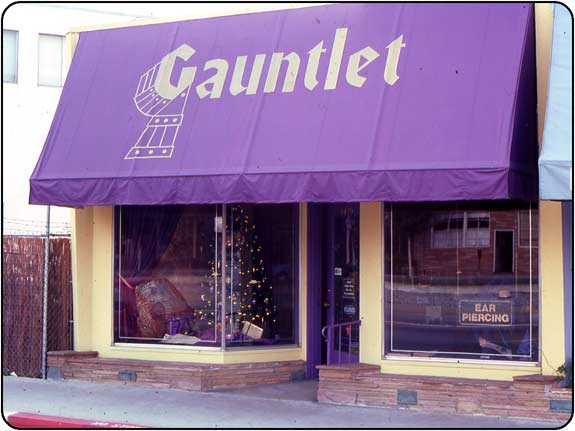 The exterior of the store with its purple awning As for decorating the interior, some friends and T&P group members thought the motif should be “early dungeon” — dark with lots of black leather and chains. While certainly sexy for some, for lots of people this would be too intimidating. It might also create an impression of sleeze and a possibly unsanitary environment. For most people getting pierced is scary enough, and less edgy surroundings can help put them at ease. I envisioned a day when piercing would become popular with more than just gay S/M enthusiasts. I wanted a look that would be inviting to anyone who walked into the store. A stylish wallpaper, something in which purple was a major element, would certainly be a good starting place. From working in a paint and wallpaper store I was familiar with many of the wallpaper designers and what they had to offer. So I got dressed up and headed for the newly opened Design Center to play interior designer. Finding what I wanted proved to be a bigger challenge than I had anticipated. There was almost nothing in which purple was a significant keynote. While some companies will custom color a run of paper for a design job, it’s expensive and reasonable only for a large job. I only needed a few rolls of wallpaper. What I finally settled on was beautiful, if a little over the top. It was a foil paper with an art nouveau motif of giant peacock feathers in shades of gold, orange, rose, and russet red with purple accents. The effect was quite dramatic. Some friends said it looked like a bordello. Others thought it was a little too gay. But once applied to the walls, with the trim and ceiling painted in a complementary purple, everyone had to admit the place looked elegant. 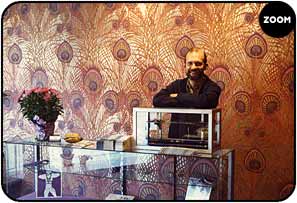 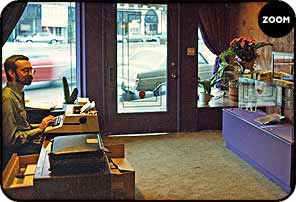 Left: The front counter. The wallpaper was a real eyecatcher. Right: Gordon, one of my first office assistants, at work in the newly opened store.
I really would have liked to have had purple carpet, but that was not to happen for several years. Until then we made do with the sandy beige carpet that covered the floor when I took occupancy. At one point a carpet dyeing service was called in to dye the carpet purple, but after they did a small, inconspicuous test area, the idea was scrapped. The best they were able to come up with was a sickly lavender which was not acceptable. 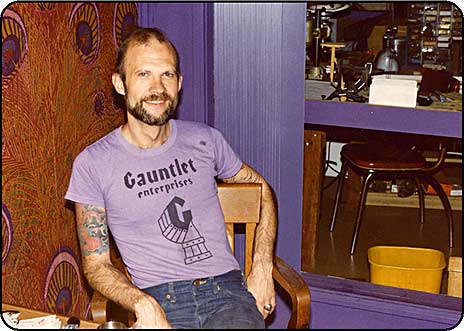 At my desk. Notice the jewelry making area directly behind me. The vertical blinds could be closed to provide privacy when I was piercing. The back half of the store was to serve double duty. There was to be an area where I would make jewelry and another screened off area where I would do the piercing. The back wall was covered with a mottled silver and white wallpaper. The remaining walls were painted white. Good lighting was important, and the white gave the area a clean reassuring feel.  Making jewelry As the decorating proceeded, plans for the grand opening were taking shape simultaneously. I designed invitations and had them printed. Fakir graciously provided a photo of his enlarged nipple piercing which appeared on the front. Well over a hundred invitations were sent out to enthusiasts all over the world. 
The grand opening was scheduled for November 17, Gauntlet’s third anniversary. There was a whirlwind of activity in preparation. Refreshments had to be purchased, champagne iced, everything put in order. A local photographer named Charlie Airwaves was hired to take photographs. It was one of the biggest days of my life. Guests began arriving around eight o’clock. My lover Eric and Doug were on hand to help me welcome them. Doug was in his element. For him this was the manifestation of a long-held dream. 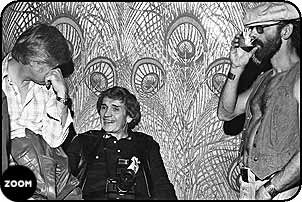 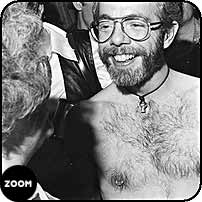
Throughout the evening over a hundred people attended the festivities. It was a historical event. I wonder if that many piercing enthusiasts had ever congregated in one location at the same time before. Among the many guests were my pal Rod, and Tom the librarian who had been so fatefully instrumental in bringing it all into being. 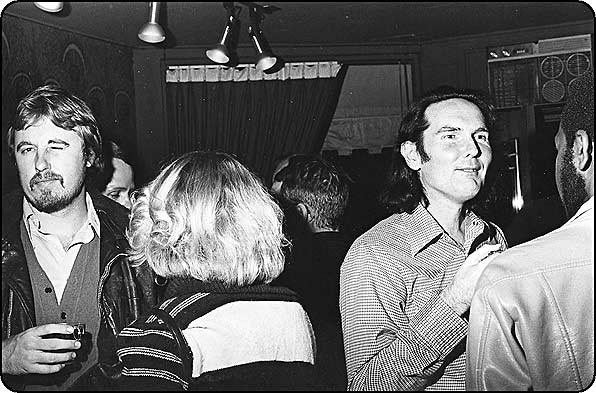 Among the guests was Tom the librarian (right facing forward) who was responsible for bringing Doug and me together. (Photo by Charlie Airwaves) Members of the T&P group were out in force, among them Bud who would become known to the piercing world as Viking Navaro. From Orange County, pro-dom Mistress Antoinette showed up and was photographed with both Doug and I. 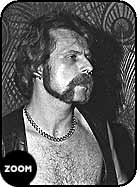 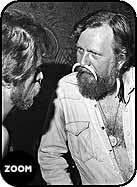 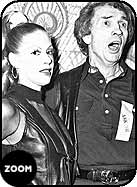 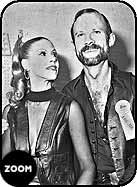 L-R: 1. Members of the T&P group in conversation (photo by Charlie Airwaves). 2. Decked out in Gauntlet-made septum tusks, Bud, AKA Viking Navaro, converses with fellow enthusiasts (photo by Charlie Airwaves). 3. Doug caught in mid-yawn or mid-sentence with pro-dom Mistress Antoinette. 4. Mistress Antoinette and I catching a photo op. So the opening night of the first store in the world devoted exclusively to body piercing came to an end. It was an event I will never forget. Who would have dreamed that in less than three decades there would be thousands of piercing establishments around the world following in its footsteps?  Next: The World’s First Piercing Magazine
|
Post navigation
 BME/News and Modblog highlight only a small fraction of what BME has to offer. Take our free tour and subscribe to BME for access to over 3 million body modification related photos, videos, and stories.
BME/News and Modblog highlight only a small fraction of what BME has to offer. Take our free tour and subscribe to BME for access to over 3 million body modification related photos, videos, and stories.
